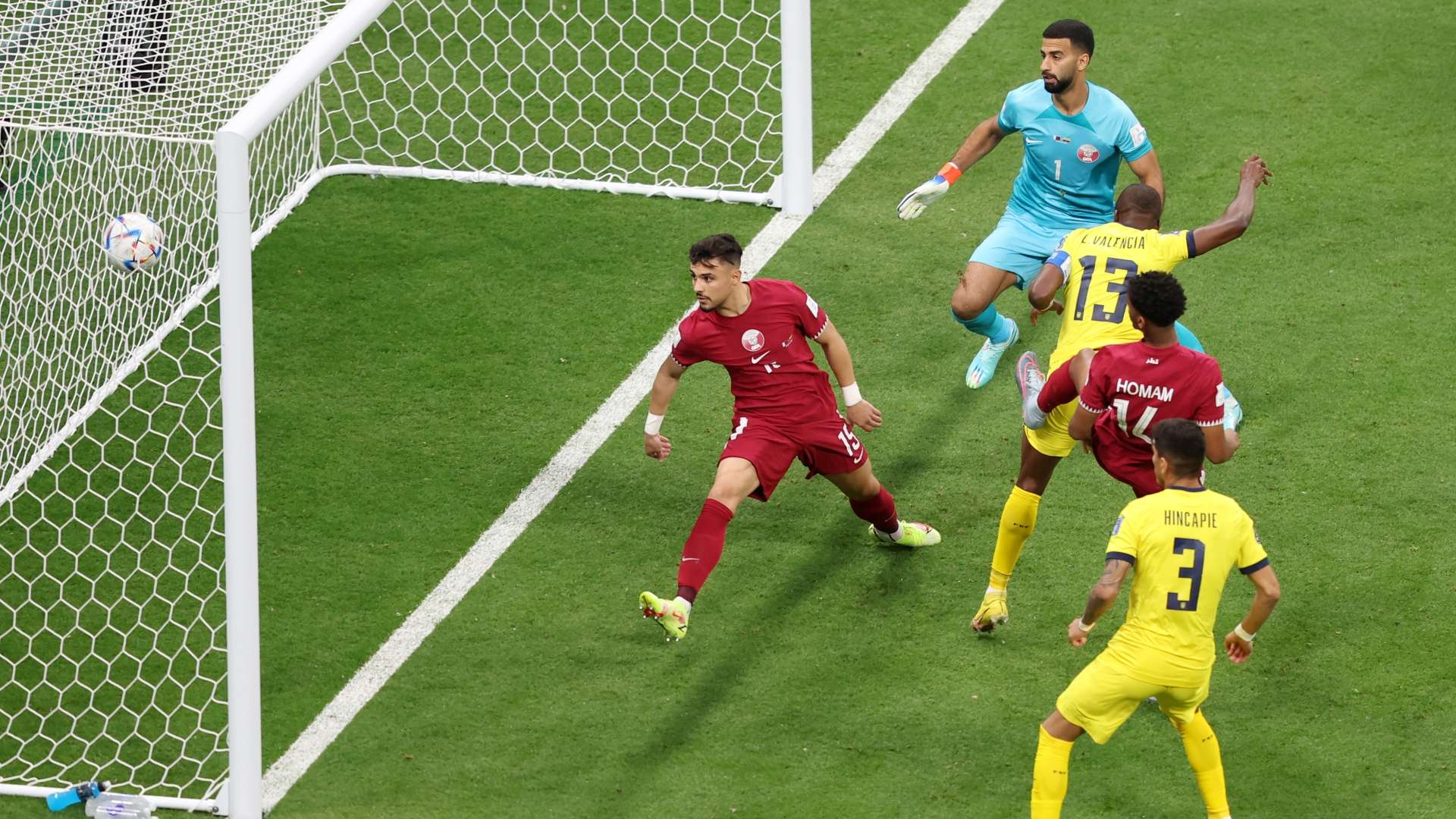It seems simple enough in theory, but few football rules cause more debate and controversy than the offside law.
A prime example in the 2022 World Cup was when one of Enner Valencia's goals against Qatar in the opening game of the tournament was disallowed after a second watch by VAR.
Goalkeeper Saad Al Sheeb's howler was punished by Valencia, who headed into an open net, but the goal was ruled out as an offside after replays showed that Michael Estrada was narrowly offside off the lofted pass by Felix Torres.
That was just one example of how the rule has come under scrutiny of late, but what do the Laws of the Game actually say about its enforcement?
Here is your guide to exactly what the offside rule currently entails according to Football Association and FIFA provisions.
What is the offside rule?
 Getty
GettyYou are offside when you are in the opponents' half and any part of your head, body or legs is closer to the opponents' goal line than both the ball and the second-last opponent.
One of those two opponents is almost always the goalkeeper, so usually if either the ball or one outfield opponent is not between you and the goal line, you will be offside. You are not offside if you are level with the second-last opponent (or both opponents).
It is not an offence to simply be in an offside position, though - you can stand offside whenever you like without the whistle being blown.
Being offside can become an offence for a number of different reasons, and this is where the confusion starts and controversy can arrive.
The first, and most common and obvious, is when you receive and play the ball having been in an offside position when it is played to you by a team-mate. That is called interfering with play.
Offside can also become an offence, however, when you interfere with an opponent. You can do this in four ways:
- by preventing an opponent from playing or being able to play the ball by obstructing his line of vision
- by challenging an opponent for the ball
- by clearly attempting to play the ball when this impacts an opponent
- by making an obvious action which impacts an opponent's ability to play the ball
Lastly, you are also offside if you have been standing in an offside position when a team-mate plays the ball and it rebounds or deflects off the post, crossbar or an opponent to you or is deliberately saved and rebounds to you.
When is offside not an offence?
 Getty
GettyAs mentioned, you can stand in an offside position and not be committing an offside offence if you are not interfering with play or an opponent or gaining an advantage on a rebound, save or deflection.
There is also no offence if you are standing in an offside position and you receive the ball when an opponent has deliberately played it, or if you receive the ball directly from your team's goal kick, corner kick or throw-in.
You cannot be offside if you are in your own half when the ball is played - even if you have reached the opposition half by the time you receive it - so there is no offence there, either.
What are the sanctions for an offside offence?
 Getty Images
Getty ImagesWhen an offside offence occurs, the defending team is awarded an indirect free-kick. It is taken wherever the offside player plays the ball, interferes with play or an opponent or gains an advantage.
Players are not punished with cards or any other discipline for offside offences, no matter how many of them they commit.
So what's the controversy with offside?
.jpg?format=pjpg&auto=webp&width=3840&quality=60) Getty
GettyDespite being one of football's most fundamental rules, offside rulings are regularly at the centre of debate and controversy.
The problem is that certain aspects of the rule are not black and white but instead involve a degree of subjectivity. While there are few issues when an offside player directly interferes with play, what exactly constitutes interfering with an opponent is up to the referee to decide.
Then FIFA announced the semi-automated VAR calls for offside at the 2022 World Cup, where state-of-the-art technology is to be used after the same was trialed at Arab Cup and Club World Cup in 2021.
In a complaint by France that was dismissed by FIFA, the controversy was over Antoine Griezmann's disallowed goal against Tunisia. The goal was ruled out following a VAR check that showed the Frenchman in an offside position when the ball was originally played before he moved back into an onside position.
For the foreseeable future, though, offside looks set to continue to exist in its current form.
